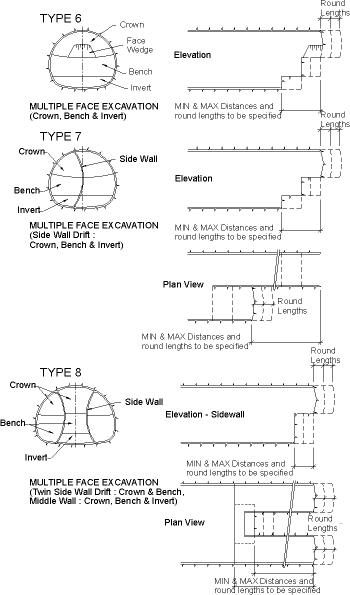You are here
Excavation and Support Systems
The design of the excavation and support sequence for the construction of an underground space is a complex engineering problem. The designer must consider many factors in order to choose the most appropriate system.
These may include:
- Tunnel size and required geometry
- Nature of support elements to be used
- Anticipated ground conditions
- Anticipated ground behaviour during tunnelling
- Available plant to carry out works
- Surface settlement requirements
The figures show excavation and support Types 1 to 8, which show typical configurations of commonly used tunnel heading designs. These are for tunnels supported with some combination of reinforced sprayed concrete, steel arches, rockbolts, dowels and other elements.


Generally, the most critical factor is the anticipated ground conditions and the variability of the ground. Therefore, it is important that an understanding of nature of the ground as well as the likely behaviour of the ground during tunnelling is gained. During tunnelling the encountered ground conditions should be compared to those anticipated during the design stage. It is then possible to alter the excavation and support system to improve the overall tunnelling performance. Alterations should only be made on the basis of interpreted geotechnical monitoring data and with the full agreement of the designer. Such alterations during construction are common in modern tunnelling practice.
These may include:
- The reduction of time to invert closure by, for example, changing from Type 5 to Type 6, in order to minimize surface settlement.
- The increase of production rate by for example, eliminating headings if they are unneccessary, such as a change from Type 3 to 2.